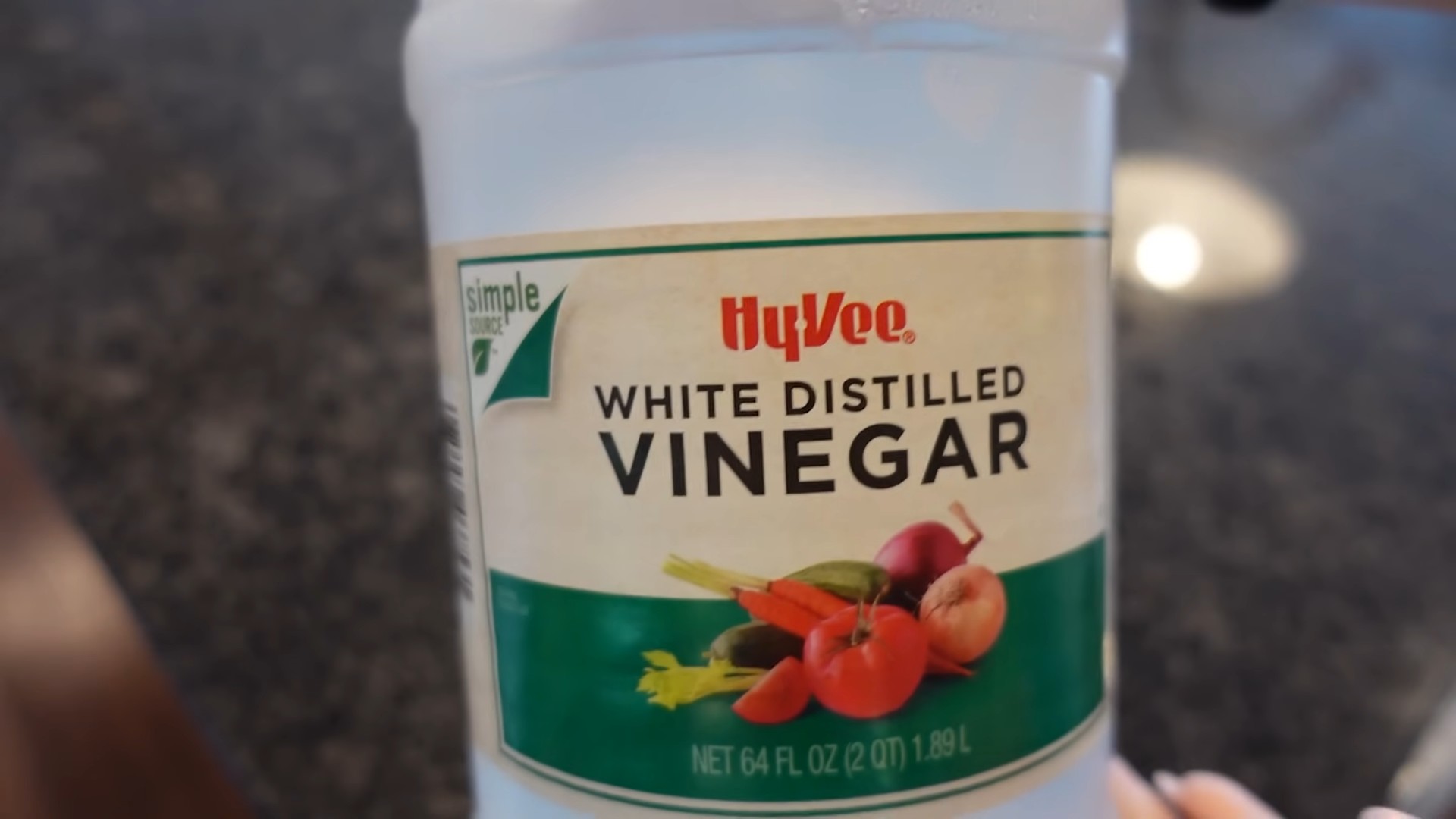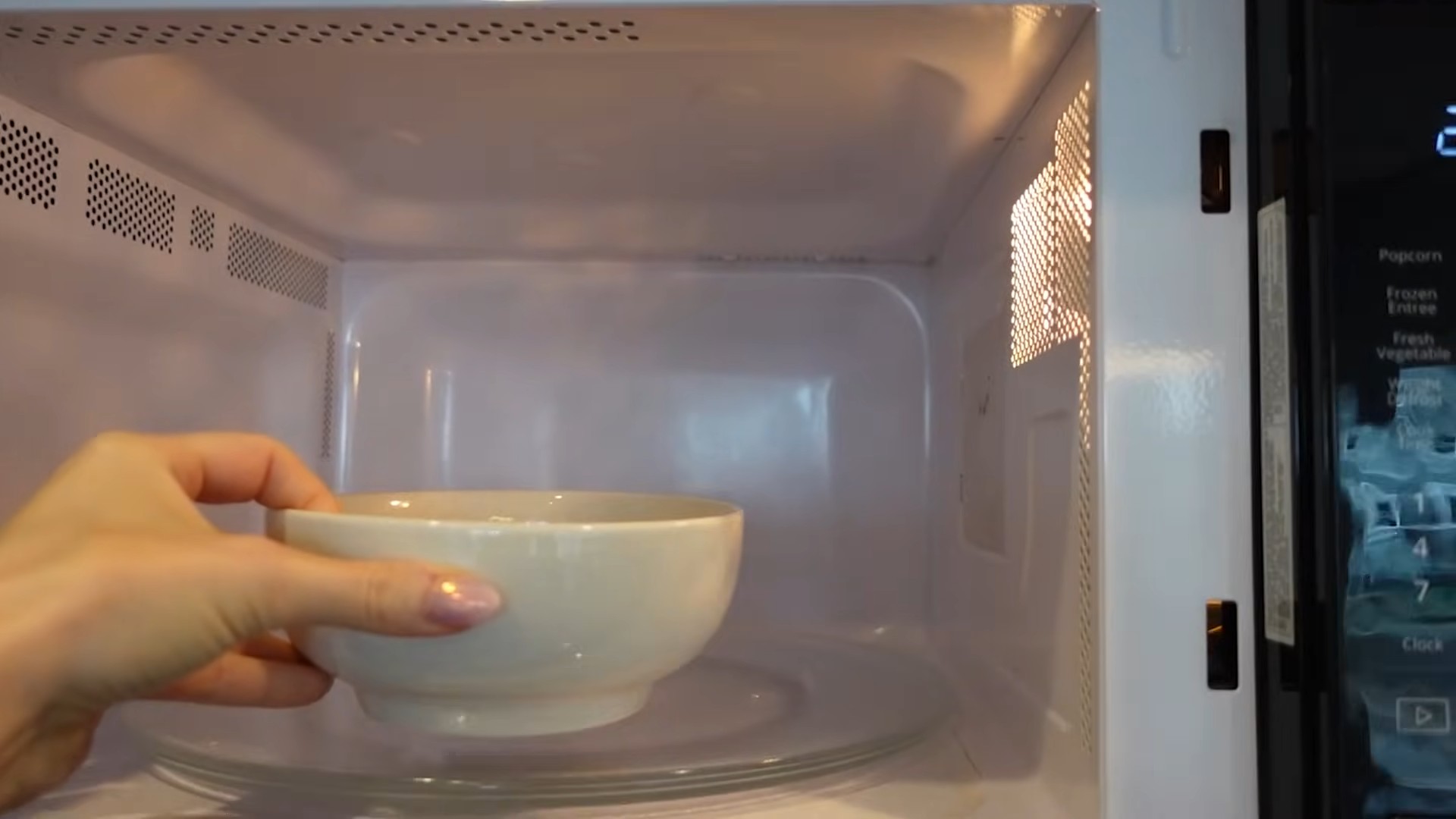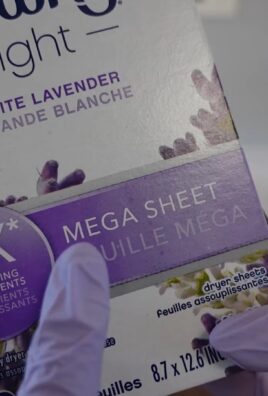Microwave cleaning vinegar hack: Are you tired of staring into a microwave splattered with yesterday’s lunch, dreading the scrubbing session ahead? I know I am! Let’s face it, cleaning the microwave is one of those chores we all put off, until it becomes a sticky, smelly biohazard. But what if I told you there’s a super simple, practically effortless way to banish those baked-on messes using something you probably already have in your pantry?
For generations, vinegar has been a go-to cleaning agent, passed down through families as a natural and effective solution. Its cleaning prowess isn’t just a modern discovery; ancient civilizations used vinegar for everything from preserving food to disinfecting wounds. Now, we’re harnessing its power to tackle the dreaded microwave grime!
This DIY microwave cleaning vinegar hack isn’t just about saving time; it’s about avoiding harsh chemicals and creating a healthier home environment. Many commercial microwave cleaners are packed with ingredients we can barely pronounce, let alone want near our food. This method is safe, eco-friendly, and incredibly budget-friendly. Plus, it’s so quick, you can do it in the time it takes to brew a cup of coffee. So, ditch the elbow grease and let’s get that microwave sparkling with this amazing microwave cleaning vinegar hack!

“`html
DIY Microwave Cleaning Power: The Vinegar Steam Clean Hack
Okay, let’s face it, cleaning the microwave is probably on everyone’s list of least favorite chores. But fear not! I’m going to share a super easy and effective method using just vinegar and water. This hack uses the power of steam to loosen all that splattered food, making it a breeze to wipe clean. Trust me, you’ll thank me later!
What You’ll Need:
* A microwave-safe bowl (glass or ceramic works best)
* White vinegar
* Water
* A clean sponge or cloth
* Oven mitts or pot holders (safety first!)
The Magic Ratio: Vinegar to Water
The key to this hack is getting the right ratio of vinegar to water. I’ve found that a 1:1 ratio works perfectly.
Step-by-Step Instructions:
1. Prepare the Vinegar Solution: Grab your microwave-safe bowl and pour in one cup of white vinegar. Then, add one cup of water. Mix it up a little bit, but don’t worry about being too precise.
2. Microwave the Solution: Place the bowl with the vinegar and water mixture inside your microwave. Now, this is where the magic happens! Set the microwave to high for 5-10 minutes. The exact time will depend on the power of your microwave and how dirty it is. I usually start with 5 minutes and add more time if needed. You want the solution to boil vigorously and create a lot of steam.
3. Let the Steam Work Its Magic: Once the microwave stops, DO NOT OPEN THE DOOR IMMEDIATELY! This is crucial. Let the steam sit inside the microwave for another 3-5 minutes. This allows the steam to really penetrate and loosen all the grime and food particles stuck to the walls, ceiling, and turntable. Think of it as a mini-sauna for your microwave!
4. Carefully Remove the Bowl: Using your oven mitts or pot holders (remember, safety first!), carefully remove the bowl from the microwave. The bowl and the water will be very hot, so be extra cautious. Set it aside on a heat-resistant surface to cool down.
5. Wipe Down the Interior: Now comes the satisfying part! Take your clean sponge or cloth and start wiping down the inside of the microwave. You’ll be amazed at how easily the loosened food particles come off. You might need to rinse your sponge or cloth frequently as you go. Pay special attention to the ceiling, walls, and any stubborn spots.
6. Clean the Turntable and Roller Ring: Remove the turntable and roller ring from the microwave. Wash them with warm, soapy water. Rinse them thoroughly and dry them before placing them back in the microwave. These parts often accumulate a lot of splatters and spills, so giving them a good cleaning is essential.
7. Wipe Down the Exterior: Don’t forget the outside of your microwave! Use a damp cloth to wipe down the exterior, including the door, control panel, and sides. This will remove any fingerprints, smudges, or spills.
8. Air Dry or Towel Dry: Once you’ve wiped down the entire microwave, you can either let it air dry completely or use a clean towel to dry it. I usually prefer to towel dry it to prevent any water spots.
Troubleshooting and Tips:
* Stubborn Spots: If you encounter any stubborn spots that won’t come off easily, try dipping your sponge or cloth in a little bit of the remaining vinegar solution and scrubbing gently. You can also use a non-abrasive scrub pad for extra cleaning power, but be careful not to scratch the interior of your microwave.
* Lingering Vinegar Smell: Some people find the smell of vinegar a bit strong. If you’re one of them, don’t worry! The smell will dissipate quickly. You can also leave the microwave door open for a few minutes to air it out. Alternatively, you can place a small bowl of baking soda inside the microwave overnight to absorb any remaining odors.
* Preventative Measures: To keep your microwave cleaner for longer, try covering your food with a microwave-safe lid or plastic wrap when heating it up. This will help prevent splatters and spills. Also, try to wipe up any spills immediately to prevent them from hardening and becoming more difficult to clean.
* Frequency of Cleaning: How often you clean your microwave will depend on how often you use it and how messy you are. I usually try to clean mine at least once a week, but you may need to clean it more frequently if you use it heavily.
* Microwave-Safe Materials: Always make sure that any bowls, containers, or utensils you use in the microwave are labeled as microwave-safe. Using non-microwave-safe materials can be dangerous and can damage your microwave.
* Safety First: Always use oven mitts or pot holders when handling hot bowls or containers in the microwave. Be careful not to burn yourself on the steam or hot surfaces.
Why This Hack Works: The Science Behind It
Vinegar is a natural cleaning agent that contains acetic acid. This acid helps to break down grease, grime, and food particles. When the vinegar and water mixture is heated in the microwave, it creates steam. The steam helps to loosen the dirt and grime, making it easier to wipe away. Plus, the vinegar helps to deodorize the microwave, leaving it smelling fresh and clean.
Alternative Cleaning Solutions (If You’re Not a Vinegar Fan):
While I swear by the vinegar method, I understand that some people might not like the smell or prefer other options. Here are a couple of alternatives you can try:
* Lemon Juice: Similar to vinegar, lemon juice contains citric acid, which is a natural cleaning agent. Simply mix equal parts lemon juice and water in a microwave-safe bowl and follow the same steps as with the vinegar method. The lemon juice will also leave your microwave smelling fresh and citrusy.
* Baking Soda: Baking soda is another great natural cleaning agent. Mix a few tablespoons of baking soda with water to form a paste. Apply the paste to the inside of the microwave and let it sit for a few minutes. Then, wipe it away with a damp cloth. Baking soda is particularly effective at removing stubborn stains and odors.
Maintaining a Sparkling Clean Microwave:
Once you’ve got your microwave sparkling clean, here are a few tips to help you keep it that way:
* Wipe Up Spills Immediately: The best way to prevent your microwave from getting dirty is to wipe up any spills as soon as they happen. This will prevent the spills from hardening and becoming more difficult to clean later on.
* Cover Your Food: When heating up food in the microwave, always cover it with a microwave-safe lid or plastic wrap. This will help prevent splatters and spills.
* Regular Cleaning: Make it a habit to clean your microwave regularly, even if it doesn’t look particularly dirty. A quick wipe-down once a week can go a long way in preventing buildup and keeping your microwave looking its best.
* Use Microwave-Safe Containers: Always use microwave-safe containers and utensils when heating up food in the microwave. Non-microwave-safe materials can leach harmful chemicals into your food and can also damage your microwave.
* Ventilation: Make sure your microwave is properly ventilated. This will help prevent moisture buildup and mold growth.
So there you have it! My go-to method for cleaning a microwave using the power of vinegar and steam. It’s quick, easy, and effective, and it will leave your microwave sparkling clean and smelling fresh. Give it a try and let me know what you think! Happy cleaning!
“`

Conclusion
So, there you have it! The microwave cleaning vinegar hack is more than just a cleaning tip; it’s a game-changer for anyone who wants a sparkling clean microwave without harsh chemicals or endless scrubbing. It’s quick, it’s easy, it’s cost-effective, and it’s something you can do with ingredients you likely already have in your pantry.
Why is this a must-try? Because it tackles the baked-on splatters and stubborn stains that make your microwave look like a science experiment gone wrong. It eliminates lingering odors, leaving your microwave smelling fresh and clean. And most importantly, it does all of this without exposing you or your family to potentially harmful chemicals found in many commercial microwave cleaners.
But the beauty of this hack lies in its adaptability. Feel free to experiment with variations to suit your preferences. For a more potent cleaning action, add a few drops of lemon essential oil to the vinegar-water mixture. The lemon oil not only enhances the cleaning power but also leaves a delightful citrus scent. Alternatively, if you’re not a fan of the vinegar smell, try using lemon juice instead. While vinegar is generally more effective, lemon juice offers a milder, more pleasant aroma. You can also try adding a cinnamon stick to the water-vinegar mixture for a warm, comforting scent.
Another variation involves the container you use. While a microwave-safe bowl works perfectly well, you can also use a microwave-safe cup or even a glass measuring cup. The key is to ensure the container is large enough to hold the water-vinegar mixture without overflowing during the heating process.
And don’t limit this hack to just cleaning the inside of your microwave. You can also use the steam to loosen grime on the microwave turntable and the inside of the door. Simply wipe them down with a damp cloth after steaming.
We are confident that once you try this microwave cleaning vinegar hack, you’ll wonder how you ever cleaned your microwave without it. It’s a simple, effective, and eco-friendly solution that will save you time, money, and effort.
So, go ahead, give it a try! We encourage you to share your experience with us. Did you find it as effective as we did? Did you try any variations? What were your results? Share your tips, tricks, and photos in the comments below. We love hearing from our readers and learning from your experiences. Let’s make microwave cleaning a breeze, one vinegar hack at a time!
Frequently Asked Questions (FAQ)
1. What kind of vinegar should I use for this microwave cleaning hack?
White vinegar is the recommended choice for this cleaning hack. It’s readily available, inexpensive, and has a high acidity level, making it effective at breaking down grease and grime. While other types of vinegar, such as apple cider vinegar, can also be used, they may not be as effective and could leave a slight odor.
2. How much vinegar and water should I use?
A 1:1 ratio of vinegar to water is generally recommended. For example, you can use 1 cup of vinegar and 1 cup of water. However, you can adjust the ratio slightly depending on the severity of the grime in your microwave. For heavily soiled microwaves, you can increase the amount of vinegar.
3. How long should I microwave the vinegar-water mixture?
Microwave the mixture for 5-10 minutes, or until the solution boils and the microwave is filled with steam. The exact time will depend on the power of your microwave. Keep a close eye on it to prevent the mixture from boiling over.
4. Is it safe to use vinegar in the microwave?
Yes, it is generally safe to use vinegar in the microwave, as long as you use a microwave-safe container. However, it’s important to supervise the process and ensure the mixture doesn’t boil over. Also, be cautious when removing the hot container from the microwave.
5. What if I don’t like the smell of vinegar?
If you’re sensitive to the smell of vinegar, you can try adding a few drops of lemon essential oil to the vinegar-water mixture. The lemon oil will help to mask the vinegar smell and leave a pleasant citrus scent. Alternatively, you can use lemon juice instead of vinegar, although it may not be as effective.
6. Do I need to wipe down the microwave immediately after steaming?
It’s best to wait a few minutes after steaming to allow the steam to loosen the grime further. Then, carefully remove the container and wipe down the inside of the microwave with a clean, damp cloth or sponge. The grime should wipe away easily.
7. What if the grime is still stubborn after steaming?
If some grime remains stubborn, you can try scrubbing it gently with a non-abrasive sponge or cloth. You can also dip the sponge or cloth in the remaining vinegar-water mixture for extra cleaning power. Avoid using abrasive cleaners or scouring pads, as they can damage the microwave’s interior.
8. How often should I clean my microwave using this method?
The frequency of cleaning depends on how often you use your microwave and how messy it gets. As a general guideline, cleaning your microwave once a week or every other week is a good practice. However, if you notice spills or splatters, it’s best to clean them up immediately to prevent them from hardening.
9. Can I use this method to clean the outside of my microwave?
While this method is primarily designed for cleaning the inside of the microwave, you can also use the vinegar-water solution to clean the outside. Simply dip a cloth or sponge in the solution and wipe down the exterior surfaces. Be sure to dry the surfaces thoroughly afterward.
10. What are the benefits of using vinegar to clean my microwave compared to commercial cleaners?
Using vinegar to clean your microwave offers several benefits over commercial cleaners. It’s a natural, non-toxic alternative that doesn’t contain harsh chemicals that can be harmful to your health or the environment. It’s also much more affordable than commercial cleaners and is readily available in most households. Additionally, vinegar is effective at disinfecting and deodorizing, leaving your microwave clean and fresh.




Leave a Comment